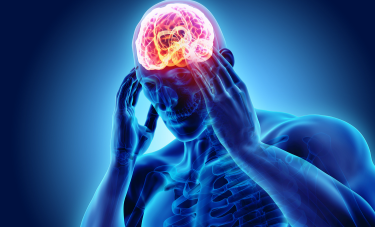Nov 15, 2021Light Aerobic Exercise May Help Concussion Recovery Times
According to a recent study, teen athletes recover from concussions sooner by incorporating light aerobic exercise rather than resting in a dark room.
Instead of so-called “cocoon therapy,” new research-supported therapy has young concussion patients getting out of bed and doing protected exercise earlier.
 “What the research found was that adolescents were having a hard time recovering from sports-related concussions if we completely shut them down,” said study author Dr. Travis Miller, from Penn State Health Sports Medicine.
“What the research found was that adolescents were having a hard time recovering from sports-related concussions if we completely shut them down,” said study author Dr. Travis Miller, from Penn State Health Sports Medicine.
“Our recent studies are showing that it is OK to return to some light, sub-threshold exercises if it is monitored by trained professionals,” Miller said in a Penn State news release. “Applying light non-symptom-worsening exercise can help speed up recovery and more quickly return our athletes to sports and other activities.”
Treatment for teens with a suspected or diagnosed concussion typically begins with 24 to 48 hours of relative rest, followed by cautious aerobic exercise.
“Patients usually start with light cardio, such as walking, the elliptical or stationary bike. I wouldn’t put someone on their normal bicycle, where they could fall and injure their head,” Miller said. “As symptoms subside and days roll on, you can increase the intensity and duration of exercise.”
“We recognize they want to return [to full participation] as fast as possible. We, as sports medicine professionals want that, too. We grew up loving to play. We’ve been trained to get you back in the safest way possible,” Miller said.
» ALSO SEE: Researchers Link NBA ACL Injuries to Driving Towards Hoop
Adolescents who rush their recovery may end up with chronic symptoms, such as persistent headaches, persistent foggy thinking, and difficulty concentrating. They also are more susceptible to reinjuring themselves and having a repeat concussion. In rare instances, athletes can suffer from second impact syndrome, which can be fatal. The brain swells rapidly when a person suffers a second concussion before fully recovering from the earlier head injury.
“It is important to make sure symptoms are successfully resolved, and we are meeting all the guidelines for recovery before stepping back onto the court, field, or rink,” he said, emphasizing that this will reduce the chances of a repeat concussion.”



